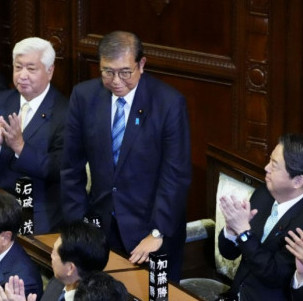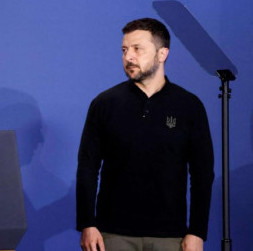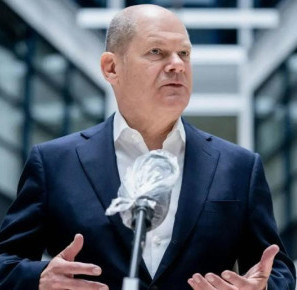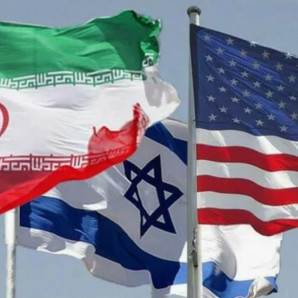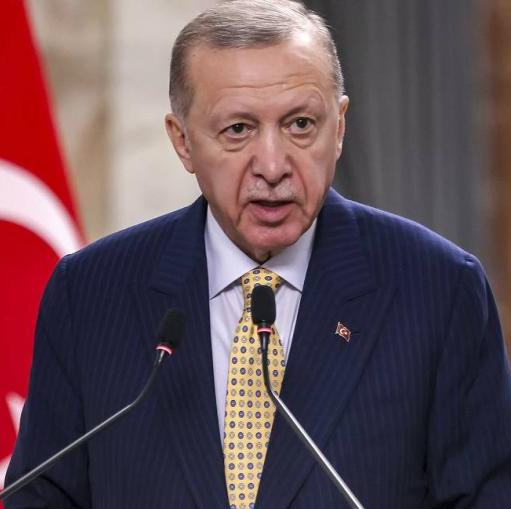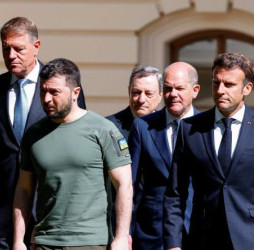From memoirs of “the Orheivist” …
About 3 million Mongols who made a historic “jump” from the feudalism to the socialist live rather isolated even from each other. A half of the Mongolian population (the country area is equal to three Frances) already more than 4 thousand years lives a life of nomads moving from pasture to pasture together with their herds and paving their ways with bones of various biological origin. Meanwhile their more civilized rulers have also not so wide geopolitical option. The concerns of the local people over prospects to become the 26th province of China (where the population of the Chinese Mongols is more than 5 million) made the country the 16th Republic of the USSR for a certain period of time. And we should say that many Mongols believed that it was a Buddha’s smile. Moscow provided a comprehensive assistance to them expecting from them mainly joint efforts in fighting back then Maoists. Ulan-Bator never objected. Because “the Mongolian Khans were the rulers of China almost for 200 years (until 1912) but no one Chinese Emperor ever was the Mongolian Bogdykhan”. By and large, Genghis Khan whose white horse-riding thirty-meter-high statute is erected above the rocky steppe is “a father of nations of Asia – heartland of the Earth”. Nobody wanted to dispute about it already in Moscow.
Deposits of copper, gold, uranium and coal discovered by Soviet geologists were preserved rather than developed. It is not excluded that Moscow that time created strategic reserves for the future. Meanwhile the Soviet troops in Mongolia enjoyed all-people’s love as a principal informal “fuel” supplier in the broad sense of the word. However, on the wave of perestroika and alcohol-combating extremism when mine workers in the Trans-Baikal Territory rubbed fuel oil in hand-made cuts on their bald heads it was already Mongolia that extended its “helping hand”. Mongolian rice vodka Orhei was so much popular among servicemen who came there for a temporary duty from Chita that they got a nickname of “the Orheivists”. Even when in the early 80s a Soviet armored personnel carrier collided in the Gobi desert with a local train nicknamed “the foundling” traveling hardly once a week along the main Mongolian single-track railroad it was interpreted as a dramatic search of a kindred spirit.
Still visible remains of tanks in Halhin-Gol (specific soil and climate), a Russian wife of the oldest and most charismatic Mongolian leader – Tzedenbal, a house-museum of Marshal Zhukov (with photo-pictures of not less famous Soviet Ambassador of the late 50s – Molotov) are the express evidence of our ties and aspirations. Only in 1996, the Mongolian People’s Revolutionary Party (Mongolian Communists) ruling in the country from 1921 shared the power with its clone – the Democratic party emerged similarly and out of similar entities as in the motherland of “the elder brother”.
Democracy for million Togrogs
Soon, US-educated journalist-dissident Elbergdorzh headed initially a liberal wing of the Democratic party and later the entire party. This 35-year-old politician became a prime minister and performed privatization as successfully as his Russian encouragers. Therefore, he lost the next election in 2000. But since Mongolia had not so many assets to be privatized, and the results of privatization were known to a few people only, the Liberals did not discredit themselves too much. So, the next six years were spent on rivalry between the accustomed Communists and still fresh Democrats generally residing at the same “Breznev Quarter” – Mongolian “Rublevka”. Only in 2006, when the Liberals started more attentively listening to the far West, the People’s Revolutionaries supported by near neighbors, Russia and China, denied patriotism to Elbergdorzh . Since that time he became an irreconcilable oppositionist. The moment of truth came on June 29, 2008, on the day of election to the Parliament-Hural.
The Democrats promised in case of their victory to pay one million Togrogs (860 Dollars) to each compatriot as his “voucher” share in the national wealth. The Communists relying on the administrative resource increased this amount up to 1300 Dollars. Therefore in the 76-seat Parliament 48 seats were received by the People’s Revolutionary party and 24 – the Democratic party. Further development of the situation was in accordance with the Belgrade-Bishkek scenario. To efficiently use the cocktails named after the well-known Soviet Ambassador the losers set the winners’ HQ afire alongside with the theater and art gallery. Then they reached the shops with Orhei and started the Revolutionary shopping. It resulted in 5 killed looters who naturally never regarded themselves as such. About two hundred policemen and common people were also injured in the riots. In these conditions, President of Mongolia Enhbayar (a leader of the People’s Revolutionary party) brought about 700 internal troops to the capital, and the situation was calmed down. At least until they start investigating about 700 cases of vandalism provoked by the Liberal Democrats. That is the whole story for the moment …
Dialectics of import-export, or break before…?
Not everything is clear with a future alignment within square West-Mongolia-Russia-China. The two last parties are in a hurry to depreserve the Mongolian deposits. In fact, Russia is a sole shareholder of Company Erdenet, a Mongolian copper producer. Russia also has plans to expand gold-copper and coal production, and develop a Rosneft gas station network. We offer to Mongolia to build a nuclear reactor and promise assistance in case of food-price rise. But dynamically developing China is also interested in raw materials. It does not accept the Western vector of Mongolian export but also is not eager to share profits with Moscow. It is confirmed by a recent “ritual-friendly” visit of future Chinese leader Xi Jinping to Ulan-Bator.
Latent standoff of the two major Asian “class-mates” provides opportunities for maneuvers of their former class antipodes. The latter dreaming about a US military base in Mongolia, all the more won’t shy at import of a color revolution to this country. What next?
In the foreseeable future Moscow and Beijing will defend the neighbor against the color revolution import. China that witnessed the bloodshed in the Tyanyanmen Square in 1989 does not want its recurrence in the trans-Mongolian ethnic interior. We also do not forget about relative connections between the Mongolians and our Buryats… But the “square” problem seems more acute.
